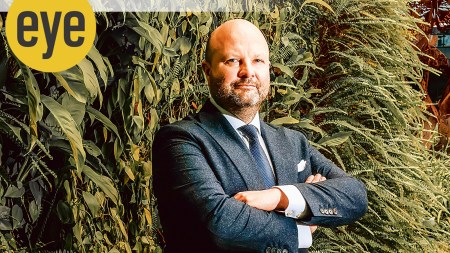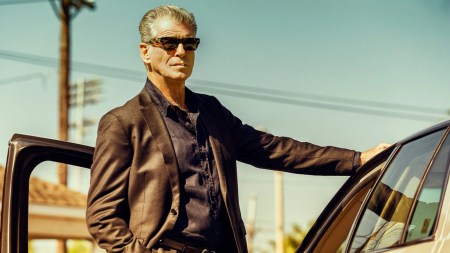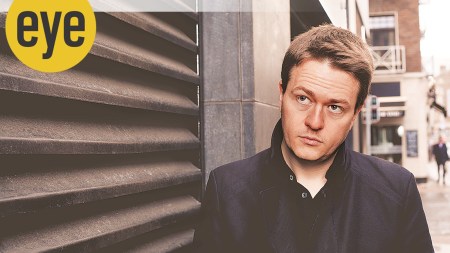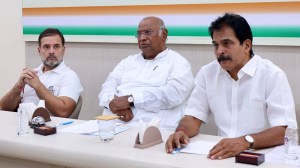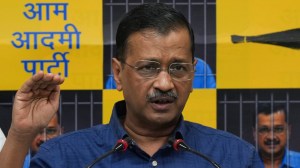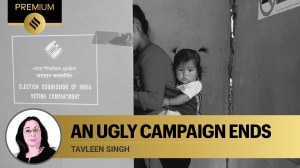- India
- International
Explained: What is Section 230, the law used to ban Trump from Twitter?
Over the years, reform of Section 230 has been a bipartisan issue — with both the Democrats and the Republicans calling for it to be amended, if not repealed.
 President Donald Trump looks at his phone, in the State Dining Room of the White House in Washington. (AP Photo/Alex Brandon, File)
President Donald Trump looks at his phone, in the State Dining Room of the White House in Washington. (AP Photo/Alex Brandon, File)Soon after a mob of President Donald Trump’s supporters stormed the US Capitol last week, his social media accounts were suspended by Big Tech companies like Twitter and Facebook for his alleged role in inciting violence and spreading misinformation. The incident spurred a renewed debate about Section 230 of the US’ Communications Decency Act — the controversial piece of internet legislation that permitted these tech companies to flex their powers and ban the president in the first place.
Over the years, reform of Section 230 has been a bipartisan issue — with both the Democrats and the Republicans calling for it to be amended, if not repealed. President Trump, himself, has been a vocal critic of the law, which shields tech companies from being held accountable for what users post online. President-elect Joe Biden, too, has criticised the law and even proposed revoking it completely.
But while the law is widely criticised, most agree that it is essential for ensuring a relatively free, safe and open internet.
What is Section 230?
Section 230 of the Communications Decency Act was passed in 1996 and provides legal immunity to internet companies for content that is shared on their websites. The act was first introduced to regulate pornography online. Section 230 is an amendment to the act, which holds users responsible for their comments and posts online.
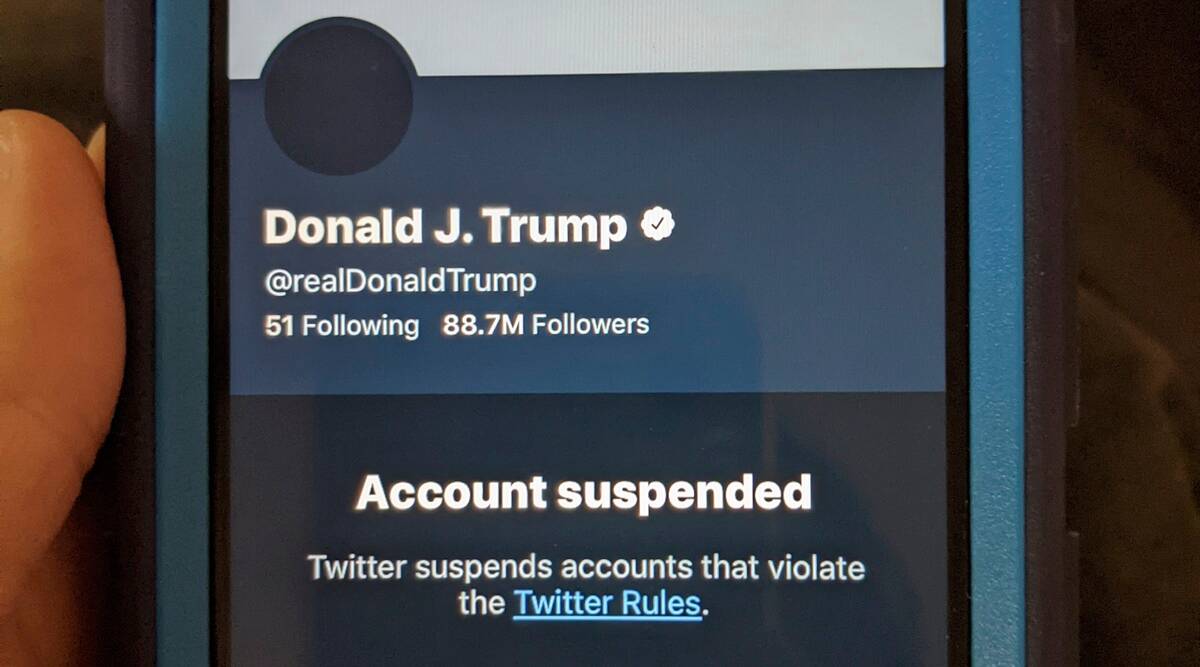 An image showing Donald Trump’s suspended Twitter account. (Image source: AP)
An image showing Donald Trump’s suspended Twitter account. (Image source: AP)
According to the regulation, “No provider or user of an interactive computer service shall be treated as the publisher or speaker of any information provided by another information content provider.”

This means that online companies, including social media platforms, are not liable for the content shared on their website by its users. So if a user posts something illegal on the website, the company is protected from lawsuits. In addition, the regulation also states that private companies have the right to remove content that violates their guidelines and values. Thus, the big tech companies were well within their rights when they decided to suspend Trump’s accounts.
The legislation was drafted by Democratic Senator from Oregon Ron Wyden and Republican Congressman from South Carolina Chris Cox over two decades ago to encourage up-and-coming technology companies and to protect free speech, enshrined in the first amendment of the US Constitution. The international digital rights group Electronic Frontier Foundation calls Section 230 “the important law protecting internet speech”.
What has it got to do with the siege on Capitol Hill?
Soon after a violent mob of US President Donald Trump’s supporters stormed the historic US Capitol building last Wednesday, the finger of blame was pointed at social media platforms and online forums — where right-wing extremists were openly planning the attack for weeks.
 Trump supporters left a flag outside the Capitol, Wednesday evening, Jan. 6, 2021, in Washington. (AP)
Trump supporters left a flag outside the Capitol, Wednesday evening, Jan. 6, 2021, in Washington. (AP)
The posts, in which the US President’s supporters described how they would break into the Capitol, have prompted questions over why violent content is often unregulated on social media sites. Facing growing backlash, Facebook, Twitter and Google started to crack down heavily on social media users sharing inflammatory content online.
From Google suspending pro-Trump social media site Parler, to President Trump being banned from nearly every major social media platform — big tech firms left no stone unturned. The reason they were able to respond to the incident so swiftly and with such ferocity is largely because of Section 230, as it protects these companies from lawsuits in the future.
Why is Section 230 widely criticised?
While the regulation has far reaching consequences for social media platforms such as Twitter and Facebook, its critics are quick to point out that it was passed before social media existed in its present form. Political leaders and internet activists have long called for the law to be updated.
More conservative critics of the regulation argue that it effectively permits big tech to participate in politically partisan activity. Republican lawmakers, including Trump, have alleged that platforms like Twitter and Facebook exhibit a clear bias against conservative voices and often abuse Section 230 of the Communications Decency Act to censor right-leaning users.
On the other hand, some argue that the law permits websites like 4chan and Parler — used by many right wing extremists — to refrain from moderating hate speech and violent content, regardless of how derogatory or vile it may be.
In an interview with the New York Times last year, President-elect Joe Biden called for the regulation to be “revoked, immediately” as it helped tech companies propagate “falsehoods they know to be false”. “I, for one, think we should be considering taking away [Facebook’s] exemption that they cannot be sued for knowingly engaged on, in promoting something that’s not true,” he said in an earlier interview with CNN.
Websites have also faced backlash for the content that they do choose to moderate. For instance, in 2014, Facebook was widely criticised for its inconsistent nudity rules when it took down a photograph of a mother breastfeeding her premature baby.
Has Trump tried to change the law?
In May 2020, President Trump issued an executive order that targeted the legal protection offered to tech companies under Section 230. He took this step after Twitter started labelling his tweets about voting by mail as misinformation. In response, the President alleged that the social media platforms were selectively censoring content as part of a wider conspiracy to “rig the election” against him.
Trump’s order called for regulators to reassess the definition of Section 230 and directed agencies to collect complaints of political bias on social media platforms that could help revoke their legal immunity.
After Biden’s victory in the 2020 presidential election, he went a step further and called for the regulation to be completely revoked. Last month, he threatened to veto the National Defense Authorisation Act (NDAA), an annual defence bill authorising billions in military spending, unless Congress agreed to repeal Section 23 completely.
“Section 230, which is a liability shielding gift from the U.S. to “Big Tech” (the only companies in America that have it – corporate welfare!), is a serious threat to our National Security & Election Integrity. Our Country can never be safe & secure if we allow it to stand…,” Trump tweeted late last month. He added that if the “very dangerous & unfair Section 230 is not completely terminated as part of the [NDAA], I will be forced to unequivocally VETO the Bill when sent to the very beautiful Resolute desk.”
Trump claimed Section 230 facilitated the spread of foreign disinformation online. However, members of Congress were quick to clap back at Trump, saying the NDAA had little to do with social media companies.
More Explained
Must Read
EXPRESS OPINION
Jun 02: Latest News
- 01
- 02
- 03
- 04
- 05






